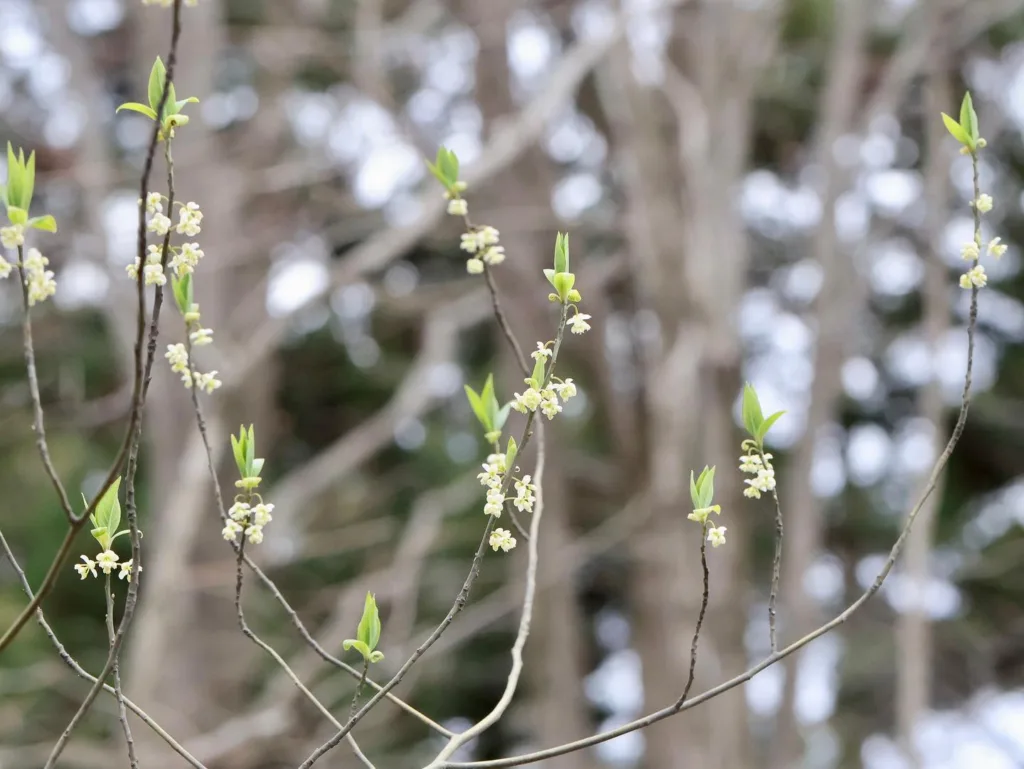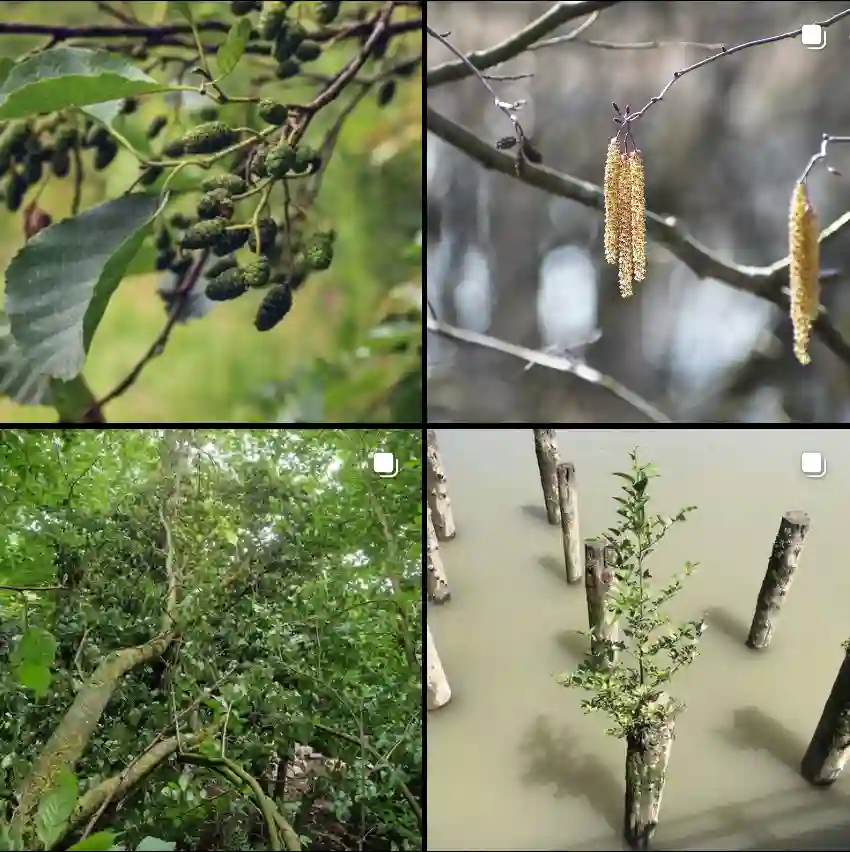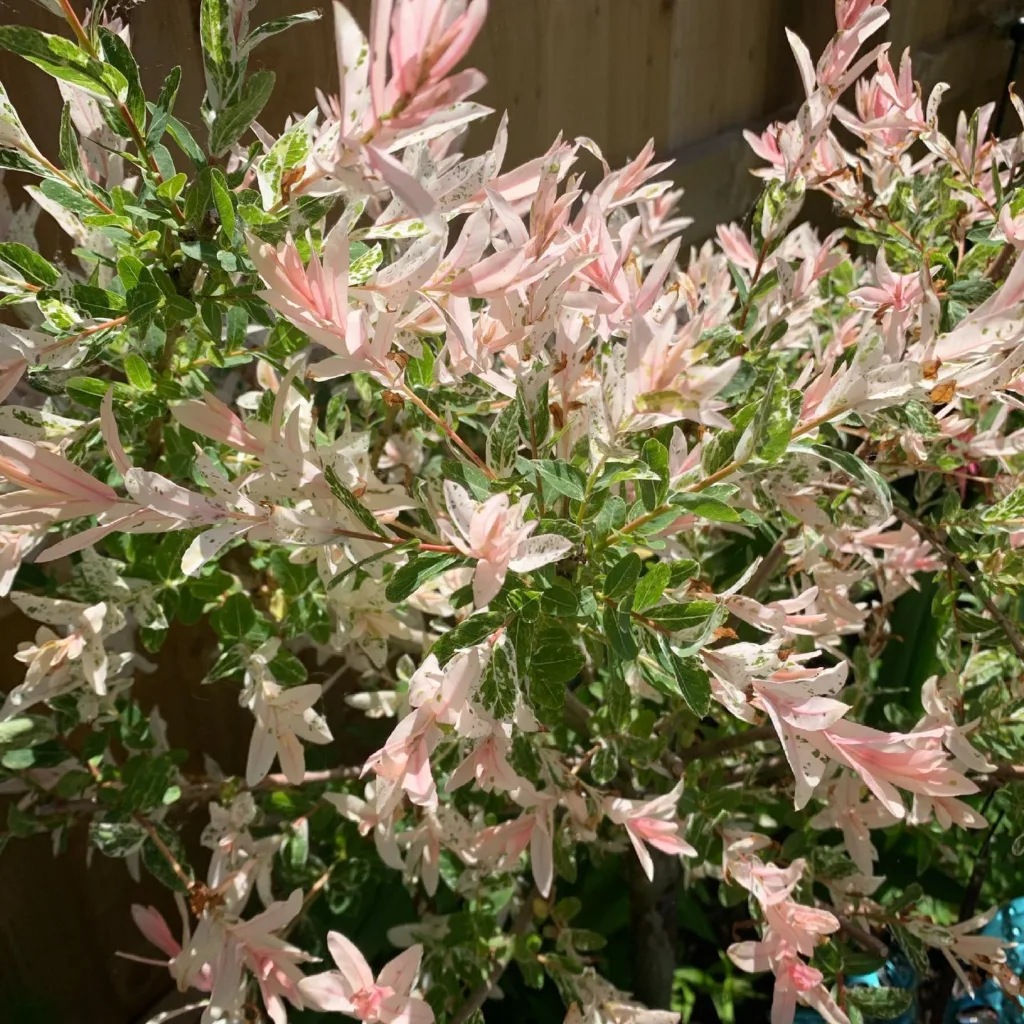
1. Introduction to Monstera Siltepecana (Silver Monstera): The Silvery Charm
1.1. What is Monstera siltepecana?
Monstera siltepecana, often referred to as ‘Silver Monstera’ or ‘Silver Queen Monstera’, is a unique and sought-after species within the Monstera genus. This plant is notable for its incredible transformation in leaf morphology as it matures. Juvenile leaves are a deep silver-green, typically unfenestrated, and possess a distinctive texture. As the plant matures and begins to climb, these leaves transition to a deeper green, grow larger, and develop characteristic fenestrations, providing that iconic ‘Swiss cheese’ Monstera look. The sparkling silver on its juvenile leaves has earned it its popular moniker and makes it a cherished item in indoor plant collections.
1.2. Reasons for its Appeal
Monstera siltepecana appeals to plant enthusiasts for several compelling reasons:
- Unique Silvery Juvenile Leaves: The distinct silver coloration and unfenestrated leaf shape of the young plant offer a delicate and captivating beauty.
- Dramatic Mature Leaf Transformation: The impressive transition from silvery, unfenestrated juvenile leaves to deep green, fenestrated mature leaves is a fascinating process to witness.
- Vigorous Climbing Habit: As a strong climbing plant, it is well-suited for creating stunning vertical displays on moss poles or trellises.
- Relatively Easy Care: Despite its unique beauty, it is considered relatively easier to care for compared to some other rarer Monstera varieties.
2. Origins and Distinguishing Characteristics
2.1. Native Habitat
Monstera siltepecana is indigenous to the tropical rainforests of Central and South America, thriving in regions like Mexico and other Central American countries. In its natural habitat, it typically grows as an epiphyte, climbing up large trees to access filtered light through the canopy. It uses strong aerial roots to cling to surfaces and absorb moisture and nutrients from the humid air. Understanding its natural environment is key to replicating ideal indoor growing conditions.
2.2. Leaf Morphology and Fenestration
The most striking feature of Monstera siltepecana is the significant change in its leaves with age:
- Juvenile leaves: These are typically smaller, oval to lance-shaped, and feature a distinct deep green color with shimmering silver patches. They do not have fenestrations.
- Mature leaves: As the plant matures and begins to climb a support, the leaves become larger, turn a deeper green, and the silver patches become less prominent. More importantly, they start to develop characteristic fenestrations and splits near the midrib, creating the “Swiss cheese” appearance. The more light and appropriate support the plant receives, the more likely it is to produce mature leaves.
2.3. Growth Habit and Rate
Monstera siltepecana is a vigorous climbing plant. It tends to produce long, leafless stems, known as “runners,” to seek out a support or a place to anchor. Once it finds a support and begins to climb, its growth rate significantly increases, and it starts to produce mature, fenestrated leaves. Its growth rate is considered moderate to fast under optimal conditions. Providing a moss pole or trellis is crucial to encourage the plant to mature and develop its desired leaf characteristics.
3. Comprehensive Care Guide: Nurturing Your Silver Monstera
Cultivating a healthy Monstera siltepecana requires creating an environment that mimics its natural tropical rainforest habitat.
Table 1: Quick Care Guide for Monstera Siltepecana (Silver Monstera)
| Care Factor | Requirement Description |
|---|---|
| Light | Bright, indirect light (e.g., East/West window, South/West window with sheer curtain). Avoid harsh direct sun. Needs 4-6 hours/day. |
| Temperature | Ideal: 18-35°C (60-95°F). Avoid sudden drops below 10°C (50°F) or drafts. |
| Humidity | Prefers high, 60-90%. Likes humid air. |
| Watering | Water when top 2-3 inches of soil are dry. Ensure good drainage. Less in winter. |
| Soil | Well-draining, organic-rich, airy mix (aroid mix, or potting mix + perlite + orchid bark + coco coir/organic matter). |
| Fertilization | Balanced liquid fertilizer, diluted by half, monthly in spring/summer. Reduce in fall/winter. |
| Repotting | Approx. every 1-3 years, or when root-bound, in spring. Increase pot size slightly (a few cm). |
3.1. Light Requirements
Monstera siltepecana thrives in bright, indirect light, mimicking its natural habitat under the canopy of larger trees. Place your plant near a window that receives plenty of filtered light, such as an east or west-facing window. A south or west-facing window can also work if the light is diffused by a sheer curtain to prevent harsh direct sun exposure. Direct sunlight, especially intense afternoon sun, can scorch the plant’s leaves, leading to brown, crispy spots and a loss of its characteristic silver coloration. Conversely, too little light will result in leggy growth, smaller leaves, and will inhibit the development of fenestrations. Rotate the plant periodically to ensure even light exposure and balanced growth.
3.2. Temperature and Humidity
As a tropical plant, Monstera siltepecana prefers warm and stable temperatures. The ideal range is from 10-35°C (50-95°F), but it thrives best between 18-29°C (65-85°F). It’s crucial to protect the plant from temperatures dropping below 10°C (50°F) and from sudden temperature changes or drafts, as these can stress the plant and damage its foliage.
High humidity is essential for M. siltepecana to thrive, ideally ranging from 60-90%. In drier indoor environments, consider using a humidifier to maintain consistent moisture. Other methods include placing the pot on a pebble tray filled with water (ensuring the pot does not sit in the water) or grouping it with other plants to create a humid microclimate. Signs of insufficient humidity often include brown, crispy leaf edges or tips.
3.3. Watering Practices
The main principle when watering Monstera siltepecana is to maintain moderately moist soil without letting it become waterlogged. Water thoroughly when the top 2-3 inches (5-7.5 cm) of the soil feels dry to the touch, or when the top half of the soil is dry. This typically takes about 1-2 weeks in an average home environment but will vary depending on the season, temperature, and humidity. Always ensure the pot has adequate drainage holes and remove any excess water from the saucer.
Avoid overwatering, as this is a leading cause of root rot. However, also avoid letting the soil go bone dry for extended periods, as this can lead to issues like yellowing leaves or crispy leaf edges. Reduce watering frequency during the cooler winter months when the plant is less actively growing. Using rainwater or filtered water can be beneficial to prevent mineral buildup in the soil.
3.4. Optimal Soil Mix and Repotting
A well-draining, airy, and organic-rich potting mix is paramount for Monstera siltepecana. This mimics the loose, organic-rich soil it finds in its natural habitat. A good mix should include:
- High-quality potting soil (approximately 50%)
- Perlite or pumice (approximately 20-30%) for enhanced aeration and drainage
- Orchid bark (approximately 20-30%) for chunkiness and improved air circulation
- Coco coir or organic compost (optional) to improve moisture retention without compaction
Repotting: Repot your Monstera siltepecana every 2-3 years, or when you notice signs of it becoming root-bound (roots growing out of drainage holes, roots circling the bottom of the pot, stunted growth). The best time for repotting is in spring, as the plant is entering its active growth period. Choose a new pot that is only 1-2 inches (2.5-5 cm) larger in diameter than the previous one, ensuring it has ample drainage holes. Avoid pots that are too large, as they can retain too much moisture.
3.5. Fertilization Strategies
During its active growing season (spring and summer), fertilize your Monstera siltepecana monthly with a balanced liquid fertilizer, diluted to half the recommended strength. This provides essential nutrients for robust growth and maintains leaf vitality. Reduce or cease fertilization entirely during the fall and winter months when the plant’s growth naturally slows down. Over-fertilization can lead to salt buildup in the soil, which can burn the roots and harm the plant. Always water the plant thoroughly before applying fertilizer to protect the roots.
4. Propagation Techniques: Expanding Your Collection
Propagating Monstera siltepecana is a relatively simple and rewarding process, most commonly achieved through stem cuttings. The best time for propagation is during the spring or early summer when the plant is actively growing.
4.1. Stem Cuttings
- Select a Healthy Stem: Choose a healthy, mature stem section that has at least one node (the bump on the stem where a leaf or aerial root emerges) and at least one healthy leaf. A cutting with 2-3 nodes often has a higher success rate.
- Sterilize Tools: Always use clean, sharp, and sterilized pruning shears or a knife to make clean cuts. This prevents the spread of diseases.
- Make the Cut: Cut just below a node. Remove any leaves that would be submerged in your chosen rooting medium (water or soil) to prevent rot.
- Rooting Medium Options:
- Water Propagation: Place the cutting in a clear jar of fresh water, ensuring the node is submerged. Change the water every few days to keep it clean and prevent bacterial growth. Roots typically begin to form within a few weeks.
- Sphagnum Moss: Place the cutting in moist, but not soggy, sphagnum moss. This medium provides excellent aeration and moisture retention, often leading to robust root development.
- Soil: You can also plant the cutting directly into a small pot filled with a well-draining, airy potting mix. Keep the soil consistently moist.
- Provide Optimal Environment: Place your cuttings in a warm spot that receives bright, indirect light. High humidity (e.g., inside a clear plastic bag or propagation box) will significantly accelerate the rooting process.
- Potting Up: Once the roots are a few inches long (for water or moss propagation), or significant new leaf growth is visible (for soil propagation), the new plant is ready to be transitioned to a larger pot with its permanent potting mix.
5. Troubleshooting Common Issues: Pests, Diseases, and Environmental Stress
While generally resilient, Monstera siltepecana can encounter a few common problems if its specific care requirements are not met. Early detection and prompt action are key to maintaining a healthy plant.
Table 2: Common Problems & Troubleshooting for Monstera Siltepecana
| Problem | Symptoms | Solutions/Treatment |
|---|---|---|
| Yellowing Leaves | Older, lower leaves turning yellow. | Overwatering (most common), nutrient deficiency, natural aging. Adjust watering, fertilize, check roots. |
| Brown Crispy Edges/Tips | Leaves browning and feeling crispy at edges. | Low humidity, underwatering, salt buildup. Increase humidity, adjust watering, flush soil. |
| Drooping Leaves | Leaves losing turgor, looking limp. | Underwatering (most common), overwatering (roots rotting), cold shock. Check soil moisture, inspect roots, ensure warmth. |
| No Fenestrations/Small Leaves | New leaves remain solid, smaller than expected. | Insufficient light, immature plant, lack of climbing support. Provide brighter indirect light, offer a moss pole, be patient. |
| Pest Infestations | Visible pests (spider mites, mealybugs, thrips, scale), sticky residue, distorted growth. | Isolate plant, treat with insecticidal soap, neem oil, or appropriate pesticides. Increase humidity. |
| Root Rot | Mushy stem base, black/brown, foul-smelling roots, yellowing/wilting. | Overwatering, poor drainage. Repot, trim rotten roots, improve drainage, reduce watering. |
| Leggy Growth | Long stems with sparse leaves. | Insufficient light. Move to brighter location. Prune to encourage bushier growth. |
5.1. Watering Issues
- Overwatering: This is the most common cause of problems. Symptoms include yellowing leaves (particularly older, lower ones), black/brown spots on leaves, a mushy stem near the soil line, and a foul, moldy smell from the soil. This eventually leads to root rot.
- Solution: Allow the top 2-3 inches of soil to dry out completely between waterings. Ensure the pot has excellent drainage. If root rot is suspected, unpot the plant, trim any rotted, mushy roots, and repot in fresh, well-draining soil.
- Underwatering: Symptoms include drooping or curled leaves, crispy brown edges or tips, and overall dull foliage.
- Solution: Increase watering frequency and ensure thorough watering so that water drains from the bottom of the pot, indicating the entire root ball has been moistened.
5.2. Light Issues
- Insufficient Light: Leads to slow growth, smaller leaves, leggy stems (long gaps between leaves on the stem as it stretches for light), and can inhibit fenestration development.
- Solution: Move the plant to a location that receives brighter, indirect light. Consider supplementing with a grow light if natural light levels are consistently low.
- Too Much Direct Light: Harsh direct sun, especially during midday, can cause leaf burn. The silvery parts are particularly sensitive. Symptoms include scorched, brown patches, or a faded appearance on the leaves.
- Solution: Relocate the plant to a spot with filtered light, or use sheer curtains to diffuse intense sunlight.
5.3. Humidity and Temperature Stress
- Low Humidity: Often causes the leaf edges or tips to turn brown and crispy. New leaves might struggle to unfurl properly.
- Solution: Increase ambient humidity using a humidifier, pebble tray, or by grouping plants together.
- Cold Stress: Exposure to temperatures below 10°C (50°F) can severely stress the plant, leading to leaf damage, wilting, and overall decline.
- Solution: Ensure the plant is in a consistently warm environment and protected from cold drafts from windows or air vents.
5.4. Pests
Common houseplant pests like spider mites, mealybugs, thrips, and scale can occasionally infest Monstera siltepecana.
- Symptoms: Visible insects (spider mites with fine webbing, mealybugs with white, cottony masses, thrips with silver streaks and black frass, scale with hard, immobile bumps), sticky residue (honeydew), or speckled, distorted leaves.
- Solution: Regularly inspect your plant, especially the undersides of leaves and stem crevices. Isolate infested plants immediately. Treat with appropriate organic pest control methods such as insecticidal soap, neem oil, or by wiping pests off with an alcohol-dipped cotton swab. Increasing humidity can help deter spider mites.
5.5. Root Rot
This is a serious fungal disease, almost always a result of overwatering and poorly draining soil.
- Symptoms: Yellowing, wilting leaves (even when the soil is wet), a mushy stem near the soil line, and black/brown, foul-smelling roots.
- Solution: Immediately remove the plant from its pot. Carefully inspect the roots and prune away all affected (mushy, black) sections with sterilized shears. Repot the plant in fresh, well-draining aroid mix, and adjust your watering schedule to allow the soil to dry adequately between waterings.
6. Conclusion: Enjoying Your Thriving Monstera Siltepecana
Monstera siltepecana, with its shimmering silver juvenile leaves and unique transformation as it matures, is a truly captivating and rewarding plant to cultivate. By consistently providing it with bright, indirect light, appropriate watering, high humidity, stable warm temperatures, and a well-draining soil mix along with adequate climbing support, you can ensure your Monstera siltepecana thrives. While it demands attention to its specific needs, the reward of nurturing its delicate beauty and watching it climb will bring immense satisfaction and a distinctive touch of tropical elegance to your indoor space.
If i die, water my plants!



